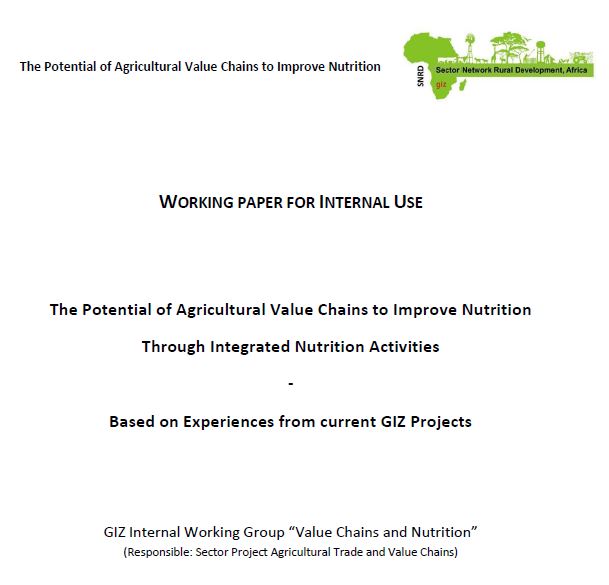Production and Supply of Nutritious Foods at the Centre of the Value Chain Discourse
Recently the professional debate has shifted from increasing income and local availability of nutrient-dense foods to reducing food insecurity and malnutrition. However, food preferences and traditions are increasingly recognised as critical factors. A new working paper shows how to integrate nutrition-related activities into agricultural value chain programs.
Value chain projects have great potential to improve the economic situation of target groups and, at the same time, contribute to improved nutrition along the value chain. The working paper provides a comprehensive overview of how agricultural value chain programs can integrate nutrition-related activities.
In the past, the development of agricultural value chains mainly focused on promoting cash crops in developing countries. The global food price crisis in 2008/2009 shifted the focus towards food crops. Then the professional discourse moved towards highlighting the importance of producing and supplying nutritious foods. The latest aim is to increase income and local availability of nutrient-dense foods to reduce the prevalence of food insecurity while also reducing the burden of malnutrition.
BMZ, the principal commissioning body, has made the linking of sustainable agricultural production with food and nutrition security an additional key priority. This thematic focus is set out in BMZ Strategy Paper 3| 2013 ‘Promoting Sustainable Agriculture’.
However, there is mounting evidence that neither the availability of nutritious foods nor raised incomes alone necessarily and automatically lead to improved nutrition. Apart from the accessibility of foods, food preferences and traditions influence dietary patterns as well as nutrition knowledge and awareness. Though agricultural value chain projects can include components of nutrition education and awareness communication to improve food and nutrition security by nutritional behaviour change, this potential has not been explored and assessed sufficiently by GIZ yet. The internal working paper shows pragmatic ways from project experience to how to use the options successfully.


